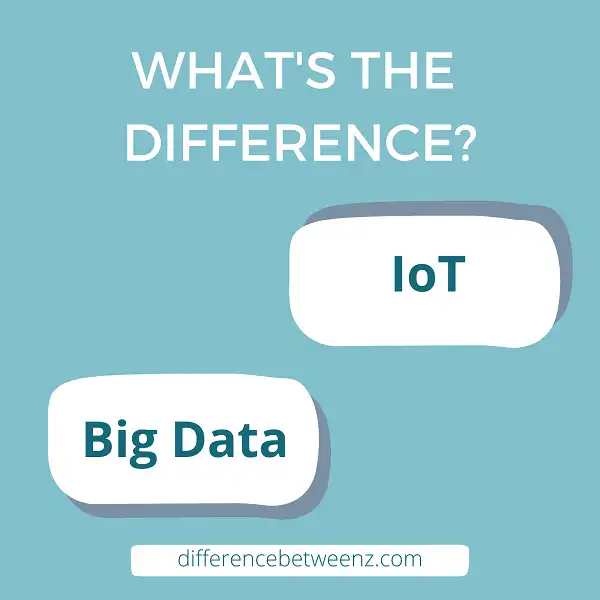The terms “IoT” and “big data” are often used interchangeably, but there is a big difference between the two. IoT refers to the connection of devices such as thermostats, security cameras, and door locks to the internet. These devices can then be controlled and monitored remotely. Big data, on the other hand, refers to the large volume of data that is collected and processed by businesses. This data can be used to improve decision-making and operations. Understanding the difference between IoT and big data is important for businesses that want to take advantage of these technologies.
What is IoT?
The Internet of Things, or IoT, is a system of interconnected devices that are designed to collect and share data. By connecting devices such as sensors, smartphones, and other devices, IoT enables organizations to collect and analyze data in real time. This data can be used to improve operational efficiency, optimize resources, and create new customer experiences. IoT is already being used in a variety of industries, including healthcare, transportation, manufacturing, and retail. As the technology continues to evolve, it is expected that IoT will have a transformative impact on businesses and society.
What is Big Data?
Big Data is a term used to describe the large volume of data that organizations collect on a daily basis. Though the term is often used in the context of business, it can also refer to any data set that is too large or complex to be processed using traditional methods. In many cases, Big Data is unstructured, meaning it does not fit neatly into a predefined database. As a result, special tools and techniques are needed to store, organize, and analyze it. While the challenges posed by Big Data are significant, the rewards can be even greater. Organizations that are able to effectively harness Big Data can gain insights into their customers, operations, and even the economy that would otherwise be hidden. As such, Big Data has the potential to revolutionize the way businesses operate.
Difference between IoT and Big Data
The rise of big data and the Internet of Things (IoT) has led to a lot of confusion about the differences between these two concepts. Big data is a term that refers to the large volumes of data that organizations now have access to. This data can come from a variety of sources, including social media, transaction records, and sensor data. The IoT, on the other hand, is a network of physical devices that are connected to the internet and can collect and exchange data. These devices can include everything from cars and wearable devices to industrial machines. While the IoT is often used to collect big data, it is important to understand that these are two distinct concepts. The IoT is simply the network of devices that are used to collect data, while big data refers to the actual data itself.
Conclusion
Big data is a term for the massive volume of data both structured and unstructured that organizations collect, process and analyze to understand trends, customer preferences and other valuable insights. The big data market is expected to reach $203 billion by 2020. The Internet of Things (IoT) is a network of devices from wearable fitness trackers to home appliances that are connected to the internet and can interact with each other. The IoT market is expected to be worth $1.7 trillion by 2020. Although they are different concepts, there’s a lot of overlap between big data and IoT. Let’s take a closer look at how these two technologies work together.


